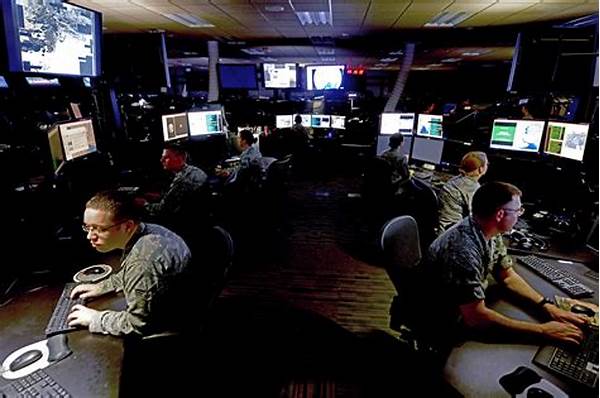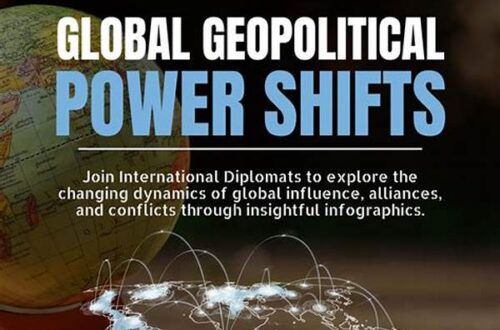In the complex realm of military strategy, intelligence gathering in warfare is an indispensable component for achieving operational success. It provides critical insights that shape strategic and tactical decisions, ensuring that military forces can anticipate threats, mitigate risks, and capitalize on opportunities. Such intelligence is garnered through a myriad of means, including reconnaissance, surveillance, and signal interception. In modern warfare, the act of gathering intelligence is no longer confined to human endeavors but extends into the realms of technology and cyber capabilities, offering unprecedented depth and scope in understanding adversary intentions and capabilities.
The Role of Intelligence in Modern Warfare
The application of intelligence gathering in warfare has evolved significantly with technological advancements, playing a pivotal role in modern military operations. This critical function involves collecting, analyzing, and disseminating information regarding enemy movements, intentions, and capabilities. Understanding these factors facilitates proactive decision-making, allowing military leaders to devise strategies that are informed and precise. Today’s intelligence gathering involves cutting-edge technology, including satellite imagery, cyber intelligence, and sophisticated data analytics, which provide a comprehensive view of the battlefield. Consequently, the nuanced processing of intelligence secures a strategic advantage, ensuring that military operations are executed with precision and foresight.
Traditionally, intelligence gathering in warfare relied heavily on human sources and physical reconnaissance missions. However, the advent of digital technologies has expanded the potential for intelligence collection dramatically. Cyber espionage, for instance, has become a prominent method, allowing the extraction of vital information from adversaries without direct confrontation. Similarly, unmanned aerial vehicles (UAVs) equipped with advanced sensors now perform aerial reconnaissance missions, reducing the risks posed to personnel and enhancing the reach and accuracy of information. These developments underscore the transformative impact of technology on intelligence gathering, enhancing its efficacy while simultaneously posing new challenges in terms of information security and ethical considerations.
Methods and Techniques of Intelligence Gathering
1. Reconnaissance Missions: Intelligence gathering in warfare often starts with reconnaissance missions, critical for obtaining first-hand information about enemy positions. These missions can be conducted on the ground or via aerial means, depending on the operational requirements.
2. SIGINT (Signals Intelligence): This method involves intercepting communications and electronic signals to derive useful intelligence. It remains a cornerstone of intelligence gathering, providing insights into enemy plans and movements.
3. HUMINT (Human Intelligence): Human intelligence is gathered through interpersonal interactions and espionage activities. HUMINT remains relevant, especially in environments where technology use by adversaries is limited.
4. IMINT (Imagery Intelligence): This technique uses satellite and aerial photography to gather intelligence. The ability to monitor large areas on the ground provides valuable information on troop movements and infrastructure.
5. Open-Source Intelligence (OSINT): This involves collecting information from publicly available sources such as news reports and social media, which can offer additional context and corroborate other intelligence sources.
The Evolution of Intelligence Practices
The landscape of intelligence gathering in warfare is subject to constant evolution, driven by technological innovation and changing geopolitical landscapes. In recent years, the integration of artificial intelligence and machine learning algorithms has revolutionized the processing of large volumes of data, enabling more accurate and timely intelligence analysis. These advances allow for the identification of patterns and anomalies that might be overlooked by human analysts, thus enhancing predictive capabilities.
As warfare becomes increasingly asymmetric, traditional methods of intelligence gathering face new challenges. The rise of non-state actors and guerrilla tactics often renders conventional military intelligence techniques less effective. To counter this, intelligence agencies are now employing hybrid strategies that combine human expertise with technological innovations, ensuring adaptability to diverse operational contexts. This adaptability is crucial to maintaining an edge in modern conflicts, highlighting the ongoing necessity for innovation in intelligence gathering practices.
Challenges in Intelligence Gathering
Intelligence gathering in warfare is fraught with challenges stemming from both technological and ethical domains. One significant challenge is the sheer volume of information that must be processed, analyzed, and filtered to yield actionable insights. The sophistication of adversaries who deploy counterintelligence measures further complicates this task, necessitating continual advancements in intelligence methodologies.
Ethically, intelligence gathering poses questions of privacy and the potential for misuse of information. As military engagements reach into cyber domains, the balance between necessary intelligence operations and the protection of civil liberties becomes increasingly delicate. Furthermore, the reliance on technology in intelligence gathering introduces vulnerabilities to cyberattacks and manipulation. Agencies must, therefore, invest in robust cyber defenses and establish protocols that ensure the integrity and security of intelligence processes while remaining transparent and accountable.
The Impact of Technology on Intelligence Missions
Technology has prominently elevated the capabilities of intelligence gathering in warfare, introducing machines and algorithms to tasks traditionally undertaken by humans. UAVs and drones offer autonomous reconnaissance, while encryption-cracking technologies enhance cryptographic intelligence. However, the rapid incorporation of such technologies also raises vulnerabilities, as adversaries too can exploit similar advancements, demanding constant upgrades and countermeasures.
Today’s intelligence operatives rely on sophisticated computer algorithms that analyze vast datasets to predict potential threats. Machine learning models sculpt insights from patterns indiscernible to the human eye, allowing preemptive actions. Yet, such reliance on technology can present blind spots, necessitating the inclusion of human oversight to validate findings, ensuring intelligence thus collected is both comprehensive and actionable.
Future Perspectives on Intelligence Gathering
The future of intelligence gathering in warfare will almost certainly continue to be shaped by developments in technology and data analytics. As emerging technologies such as quantum computing and artificial superintelligence mature, their implications for military intelligence could redefine strategic paradigms. These technologies promise not only faster data processing but also the ability to handle complexity at levels previously unattainable.
Additionally, the globalization of information and communication technologies will continue to present new challenges and opportunities for intelligence gathering. Cybersecurity will remain a principal concern, with continuous developments required to counter cyber threats effectively. Military operations will increasingly depend on a balanced synthesis of traditional intelligence methods with leading-edge technological innovations. This balance will form the bedrock of an adaptive military strategy that remains responsive to the dynamic demands of modern warfare.
Conclusion
In summation, intelligence gathering in warfare remains a cornerstone of military strategy, evolving significantly with technological advancements. The nuanced intelligence processes guarantee an informed strategic approach, maintaining decisive superiority over adversaries. As the complexity of modern conflicts intensifies, the integration of technology with intelligence operations will be essential for achieving strategic objectives.
Continued innovation in intelligence practices promises to further enhance military capabilities, providing essential insights that facilitate proactive decision-making. While challenges such as ethical concerns and information security must be navigated meticulously, the future of intelligence gathering holds immense potential to redefine warfare dynamics. Ultimately, the successful integration of intelligence into military operations ensures preparedness and strategic flexibility, protecting national interests and attaining mission success.





